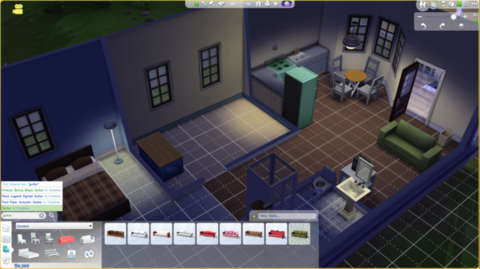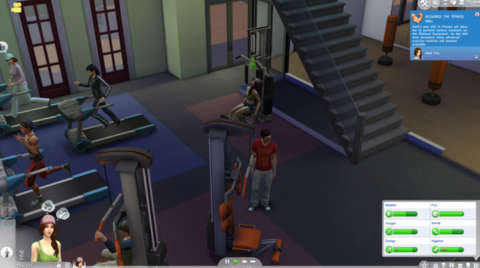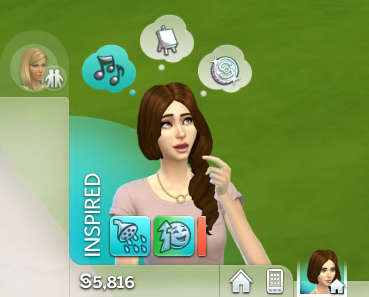How The Sims 4 Will Be Different To The Sims 3
Life's possibilities are endless. By extension, a game series intending to simulate life would also hope to have endless possibilities. The Sims series has attempted to encompass this, spawning four core games and over 50 add-on packs. Despite the accumulation of all this content, it still felt as though there was something missing. The Sims 4 attempts to address this by bringing to the series what EA is calling personality and emotions, which would drive Sim behavior.
Curious as to what this would entail, I got hands-on with the game for a few hours at a preview event. At first glance, creating a Sim and assigning aspirations was not a dramatic departure from the creation tools of previous Sims games. In fact, I recognized the neat, creative, and perfectionist traits as some of the many returning Sim characteristics. Keen to try something new, I made sure my Sim had the new "self-assured" trait, which I later discovered helped trigger an emotional state in my Sim. This is because The Sims 4 sees a new focus on Sims' personalities and quirks by introducing new emotions that reflect them. Displayed in-game as a moodlet icon and shown through their expressions on the heads-up display, the emotional state of my Sim had an effect on the subsequent actions she undertook.
I spent my first few moments of the game looking at the available options and examining the HUD. This left my Sim idle for a while, and she became bored. Acting autonomously, my Sim proceeded to the wardrobe to try on different clothes. The result saw her gain a morale boost from trying on new outfits, putting her in a confident mood that would last late into the night. This newfound confident emotion affected how my Sim would carry out her actions, turning simple tasks such as using the toilet into "Pee Like a Champion." According to the moodlet buff, because my Sim had the personality trait of being self-assured, she was more likely to frequently experience these bouts of confidence.
Different actions sent my Sim into different emotional states. For example, hitting the nightclub for a few glasses of juice put my Sim in a flirty mood, which increased the success rate of her attempts to hit on other Sims. Later at home, my Sim found her spirits lifted in a refreshing shower. Emerging inspired, she would go on to receive a boost in her efforts to learn to play the guitar.
That is, once I purchased one for her. Much like in previous Sims games, the Buy mode in The Sims 4 catalogs items by function or room type. However, I was now able to search directly for the item I was looking for, negating the need to browse through pages of objects that I wasn't interested in. Typing the word "guitar" in the search bar returned the results I was looking for, and moments later my inspired Sim was jamming away on the instrument.

While certain items in Buy mode had set color options, the flexible Create a Style tool from The Sims 3 was noticeably absent. Gone was the ability to set custom patterns on objects and pick colors from a color wheel that supported even hex color codes. Although there were a variety color schemes on offer for objects, I was disappointed to find out that I could no longer match all my furniture to my favourite shade of cream. Instead, I had to pick and choose from the available shades offered for each piece of furniture, decor, and appliance.
However, that dream could always be fulfilled with the implementation of mods. User-generated custom content will be fully supported in The Sims 4 and simplified in its integration. Wherein The Sims 3 players had to upload their creations externally on The Exchange, the tool to share user-created content is now built into the game with a feature called The Gallery. Players will be able to create content and upload it straight away, or import other players' creations without having to exit their game.
Living out my consumerist fantasies with my Sim was fun, but it quickly became clear that I required more money; my Sim needed to get a job to earn Simoleons. Unlike in real life, getting a job was surprisingly straightforward. Gone were the days of searching newspapers and online postings. Clicking through my Sim's occupation box in the interface brought up a list of exciting careers my Sim could venture into, and I settled on the path of an entertainer.

Going to work was less exciting. My Sim disappeared for hours at a time, seemingly into nothingness, as Sims no longer travel to a visible workplace. Control at work was limited to clicking my Sim's face and selecting whether she would spend time schmoozing her superiors or socializing with colleagues, among other, less exciting options. Oddly enough, when my Sim was at work I was unable to bring up the interface to watch her needs. At one point she became hungry, but because my Sim was not present on the lot I was not able bring up the hunger meter to see just how starved she was.

It was difficult to determine how much her meters had depleted overall once she returned home, as I could not watch her motives while she was working. Going to work presented a strange break in playing the game, leaving me with not much else to do except watch time tick by. However, working does have an influence on moods. My Sim would come home from work in the bored emotional state, putting a real dampener on any socialization her neighbors tried to start up with her.
Regardless, progressing through my Sim's career track provided me with concrete goals. Although I did not manage to ascend to the top of the career ladder in the time I played, I was left with a sense of having achieved something in the time I spent with my Sim. From learning to strum the guitar to starting relationships with other Sims, I felt as though these interactions were only scratching the surface of what was on offer. The introduction of emotional states offers more variables to play with to produce unpredictable results, and I am eager to delve into them in the full game.









